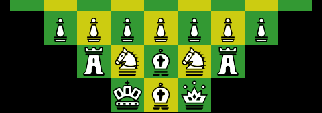[ List Earliest Comments Only For Pages | Games | Rated Pages | Rated Games | Subjects of Discussion ]
Single Comment
 H. G. Muller wrote on Sat, Jan 16, 2010 09:49 PM UTC:
H. G. Muller wrote on Sat, Jan 16, 2010 09:49 PM UTC:
Check out Balbo's Chess, our featured variant for October, 2024.
 H. G. Muller wrote on Sat, Jan 16, 2010 09:49 PM UTC:
H. G. Muller wrote on Sat, Jan 16, 2010 09:49 PM UTC: